|
|
| Tapestry Life Resources & Body Balance II Newsletter | Resources for Body,
Heart, Mind, & Spirit
May 2012 |
|
All articles written by Suzanne H. Eller unless otherwise indicated. © Suzanne H. Eller, 2012 |
|
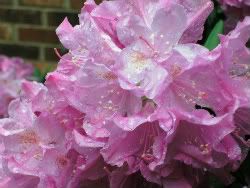 | Photo compliments of
Bobbie Moraitis |
Greetings!
This month's issue of Warp and Weft is about taking care of the largest organ of your body- your skin. Massage therapists by definition are concerned with the health of your skin, starting with the epidermis or topmost layer but also with the layers beneath on down to your fascial sheath and muscles, skeleton, and organs. Your skin is your first line of defense for protecting these underlying layers. Skin cancer is on the rise in the United States. Some of this is because we have depleted the ozone layer that protects us. Likewise, we often don't do the things we should to protect ourselves from harmful UVB rays. Some of us go to tanning beds or sunbathe for long periods with no protection and without fully understanding or appreciating the damage we may be doing to ourselves. We hope our articles will raise your awareness of skin cancer and encourage you to incorporate some practices into your life that might save it.
The essential oil of the month is Helichrysum, an oil that has amazing healing properties, especially for the skin. It is one of the oils used in ancient times and continues to have a variety of uses. Mother's Day is just around the corner. If your mother enjoys massage, think about a gift certificate for her on this special day and give her the gift of relaxation. If you are a mother and want a massage, give your loved ones the hint. We make it easy with our online gift certificates. Suzanne and Susan have signed up for the National AMTA Conference, which will be in Raleigh this October. They are both excited about the classes they'll be taking. You'll be hearing more about it as time to attend draws nearer. Please enjoy our newsletter. |
|
|
Preventing Skin Cancer
Things you can do to protect yourself
Warmer days and outdoor activities mean more time in the sun.
Unlike earlier centuries, our cultural standard for beauty celebrates a rich, golden tan- so much so that many of us spend hours sunbathing or lying in the tanning bed in order to achieve a deep "sun-glow" to our skin.
Even if we don't actively try to tan, we often neglect applying sunscreen when we go out to work in the yard, play outdoor sports, or just sit on the patio. Applying a sunscreen with and SPF of 15 or higher everyday is a first line of defense against skin cancer, and many good lotions and moisturizers qualify, not just those in the suntanning products isle. Sun over-exposure is the number one cause of skin damage that leads to melanoma. The good news is that skin cancer that is caught early is one of the easiest forms of cancer to treat and that we can protect ourselves fairly easily.
 | | Basel Cell Carcinoma |
Besides using sunscreen every day, we should avoid sunbathing and UV tanning booths. The nurse at my dermatologist told me that their office used to see about five cases of melanoma per year. Now they see that many or more cases a month. When I asked her why, she answered, "Tanning beds." Indeed, the American Cancer Society estimates there are one million new cases of melanoma annually in the US. The Skin Cancer Foundation includes all skin cancers and bumps the number of new cases to 3.5 million annually. Another line of defense is to see your dermatologist yearly for a skin exam (see the article at right.) If you don't have a dermatologist, ask your family doctor to refer you or ask your friends which doctor they see and trust. Finally, learn to examine your own skin from head to toe every month. (Click the link below for detailed instructions.) This is also where your massage therapist can help. Massage therapists are trained to alert you if they notice a suspicious area on your skin. While a massage therapist cannot diagnose, ask her to tell you if she sees a mole with one of the ABCDE characteristics. Your massage therapist sees areas clearly that are hard for you to see when you do your monthly self-exam. If she does alert you, make an appointment and have it looked at by a medical professional ASAP. For more information, please go to the links below: |
Essential Oil of the Month
Helichrysum
Helichrysum is an evergreen herb with thin, velvety leaves and yellow flowers that was found originally in Europe. The flowers, which are used to make the essential oil, are often found in dried flower arrangements. There are about six hundred species of helichrysum, but only a few are used to make essential oil, including Helichrysum augustifolium, H italicum, and H orientale. Not all essential oils can be used for burns, including sunburn, but along with lavender, chamomile, tea tree, and eucalyptus, helichrysum is excellent for first degree burns. Conversely, citrus oils can make the skin photo-sensitive and should be avoided if you are going to be in the sun. Since helichrysum also repels insects (the Romans used it to get rid of moths in their homes), it is a great choice for outdoor use in the summer. If you crush the plant underfoot, you will not only release a pleasant aroma, but you will also chase the bugs away. The plant gets its name from two Greek words- helios, which means "sun", and chrysos, which means "gold". It is also called Immortelle or Italian Everlasting. As an ancient healing remedy, it ranks alongside Rose, Frankincense, Myrrh, and Spikenard. Like these others, it is expensive, but it has a long shelf life. The aroma of helichrysum is fresh, clean and somewhat fruity or hay-like. Inhaling it is said to open the heart, clear old emotional wounds, comfort those suffering from grief or loss, and to foster feelings of unconditional love. It is also believed to stimulate the brain's right hemisphere, thus strengthening the intuitive and creative faculties. Helichrysum's antiseptic and emollient properties heal all sorts of skin conditions, including burns, cuts, sores, wrinkles, and acne. It helps skin to regenerate and can be used to prevent scars. It is also an anti-inflammatory and may be useful in treating joint pain and muscle soreness. It is a mucolytic, which means it thins mucus, thus making it good for congestion, and cough. Many users believe helichrysum can detoxify the liver and pull heavy metals, acting as a chelator. They apply it neat to the soles of the feet or mix it 1:1 with coconut oil to dilute it. Salvadore Battaglia in The Complete Guide to Aromatherapy lists it as one of the most important detoxifying oils you can buy for this purpose. How to Use:
- For burns, apply 1-3 drops undiluted ASAP. Repeat every 30 minutes until pain is relieved.
- For sunburn, mix a few drops with aloe gel or coconut oil so that you can easily spread over a larger area. (You don't need a lot of essential oil, so don't overdo.) You can also add a few drops of lavender or chamomile to the mixture. Repeat every 30 minutes as needed.
- For impact injuries, bruises and strains/sprains, apply 1-3 drops undiluted ASAP.
- To prevent scarring or reduce old scars, mix 4 drops helichrysum essential oil, 2 drops sage essential oil, and 30 drops of either rosehips seed carrier oil, calendula carrier oil, foraha (also called tamanu and a Dr. Oz favorite) carrier oil or wheat germ carrier oil. (Some of these carrier oils, which also have car reducing properties, may be found at your local health food store and at Heritage Herbs in Morganton. If you can't locate them, use shea butter, coconut oil, or cocoa butter, which are solids, so mix the essential oils with about a tablespoon of the carrier oil.)
- For joint pain, including TMJD, or muscle aches, apply 20-25 drops to two ounces of carrier oil and massage the joint or muscle. Use this same mixture to lighten dark circles under the eyes.
|
|
Seeing the Dermatologist
Suzanne's story about body-mapping
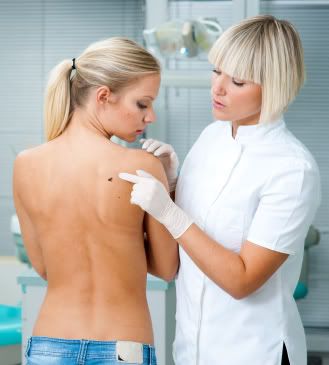 | | Dermatologist mapping the moles on the body. |
Several months ago, I had a mole removed by my regular doctor. I have a dermatologist, but I rarely visited his office. Instead, I just let my family doctor take care of any growths I found suspicious. That is, I did until the pathology report came back saying I needed more of the area around the mole removed. Then my regular doctor sent me to my dermatologist. I like Dr. Rick Salomon at Hickory Dermatology, but I can get in to see my family doctor faster. This time, I had no choice. The mole was atypical, which means it was not cancerous, but it was not normal either. Like his nurse said, "No one leaves them to find out if they turn into cancer." Dr. Salomon inspected the site and used liquid nitrogen to excise more of the area. I treated it at home with polysporin and bandages. However, because this was my third mole with atypical properties in recent years, Dr. Salomon suggested I have body mapping done; he would examine my body, measure and record the characteristics of my moles, and keep a watch on them during my yearly appointments, which I now happily scheduled. Dr. Salomon explained that I could elect to have just a portion of my body mapped or have my whole body examined. Since only the part of my body he was examining was uncovered, I chose the full body mapping. It was sort of like draping during a massage. Dr. Salomon professionally noted the size, shape, and color of my moles, and his nurse made notations. When I come in next year, he will be able to readily recognize any changes. During the body mapping, Dr. Salomon found on mole with a color irregularity. He used a procedure called scraping to remove it and sent it to the pathologist. It was also atypical, so I had more of it removed. This time he had to make a deeper incision, and I had to have stitches in two of the dermal layers. Dr. Salomon spent a lot of time explaining what the pathologist had found, all the while emphasizing that I did not have a melanoma. He also spent a lot of time explaining the procedures he used on me from that initial visit to the most recent one. The fact that he took so much time with me allayed my fears. I feel fortunate that a potential problem area was found early and treated successfully. This experience caused me to reevaluate my sun exposure habits. I studied about skin diseases in massage school, but like a kid who thinks it can't happen to me, I dismissed the idea that my years of sunbathing could have had any negative effect on my skin. Now, I am thankful that my doctors are looking out for me. Like Dr. Salomon's nurse said, I don't want to wait to see if my atypical moles turn into cancer. Furthermore, I am using my sunscreen, doing my self-exams, and having my massage therapist check me out so I can be proactive about my skin health. I am also taking a good look at my clients' moles and "spots" so I can alert them to changes, and I am advising my clients about sunscreen. (I have a large number who wear no make-up or face cream. They need a sunscreen moisturizer year round, and there are any number of excellent products on the market. If this is you, take note.) Having my body mapped is one of the best things I have done. Skin cancer is on the increase in the United States. It is also one of the easiest forms of cancer to put into remission if caught early with a success rate of about 99 percent. Yet, according to the Skin Cancer Foundation, a person dies of skin cancer every 62 minutes, and that number is on the rise with increases of about 4.2 percent per year. If it is not caught early, the success rate for treatment falls to 15 percent. Skin cancer is the leading cause of death for young adults aged 25-29 and second leading cause for those aged 15-25. There is simply no good reason to ignore your skin's health and every reason to get a dermatologist, get your body mapped and use self-care and prevention guidelines. It could save your life. |
|
The ABCDE's of Skin Cancer
What's normal and what's not
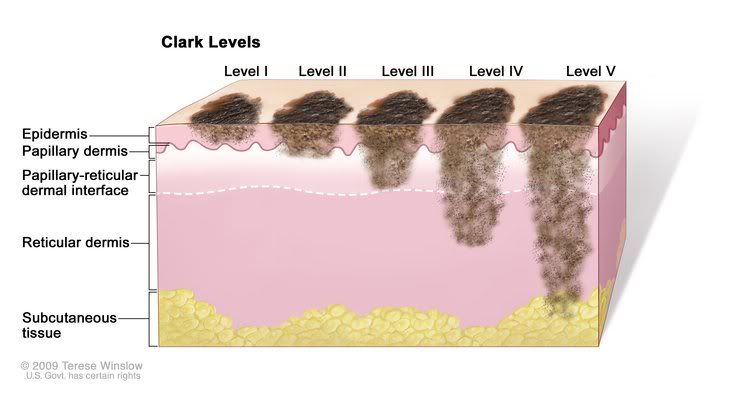
Most of us have spots on our skin, and if we are aging, we may have even more each year. Freckles, moles, birthmarks, age spots and seborrheic keratosis (those ugly but benign black and brown scabby looking spots in older adults that are a result of sun damage) are just a few of the spots that plague human beings regardless of race.
Some spots can be skin cancers. There is more than one kind of skin cancer, and in general, we need to be alert to the key early waring signs. Using the ABCDEs of melanoma can help us identify potential skin cancers before they become deadly.
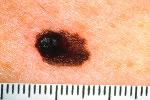 A=Asymmetry: A=Asymmetry: Healthy moles are round and symmetrical. Most melanomas are asymmetrical, meaning a line through them would not create matching halves .
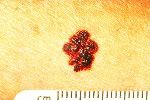 B=Border: B=Border: Normal moles have smooth, even borders. Melanomas may have scalloped or uneven edges. They might even look notched.
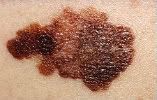 C=Color: C=Color: Common moles are uniform in color which may vary from mole to mole in shade but not within the mole itself. Moles that vary from tan to brown or even black within the mole are often the first sign of skin cancer. As the melanoma progresses, the color can change to reds, whites and blues. (Uniformly red moles are usually not cancerous unless there are other warning signs present.)
 D=Diameter: D=Diameter: Cancerous moles are usually at least the size of a pencil eraser and may be even larger. Common moles are usually smaller. Look for moles larger than 1/4 inch.
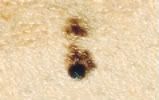 E=Evolving: E=Evolving: When a mole starts to change, you need to see a medical professional. According to the Skin Cancer Foundation, " Any change- in size, shape, color, elevation, or another trait, or any new symptom such as bleeding, itching, or crusting- is a sign of danger. |
|
|
|
|
|
We hope you've enjoyed this issue of Warp & Weft. Enjoy this beautiful spring, and call for an appointment soon.
 Sincerely,
Suzanne Eller, LMBT #7619
828-315-9900
DBA Tapestry Life Resources
Susan Smith, LMBT #6579
828-320-6933
DBA Massage by Susan
Laura Queen, LMBT #3224
828-638-3426
DBA Queen Company
Body Balance II
318 2nd Ave. NW Hickory, NC 28601
|
|
|
Don't forget Mother's Day
May 13
 | | Photographer: Warren Gold Swain from Veer |
|
Mother's Day is just around the corner. Give the special moms in your life the gift of relaxation by giving them a gift certificate for massage.
Or if that Mom is you, tell the significant others in your life that they can have an easy shopping experience by getting YOU a Body Balance gift certificate.
We have two ways for you to buy. You can come by the office and pick up your gift certificate or you can order and design your gift certificate online. Be sure to call first if you want to pick it up at the office so one of us will be there.
It's really easy to give that special woman in your life the gift of rest and relaxation. Thanks for your continued patronage. | | Online Gift Certificates make a great Mother's Day Gift! |
|
|